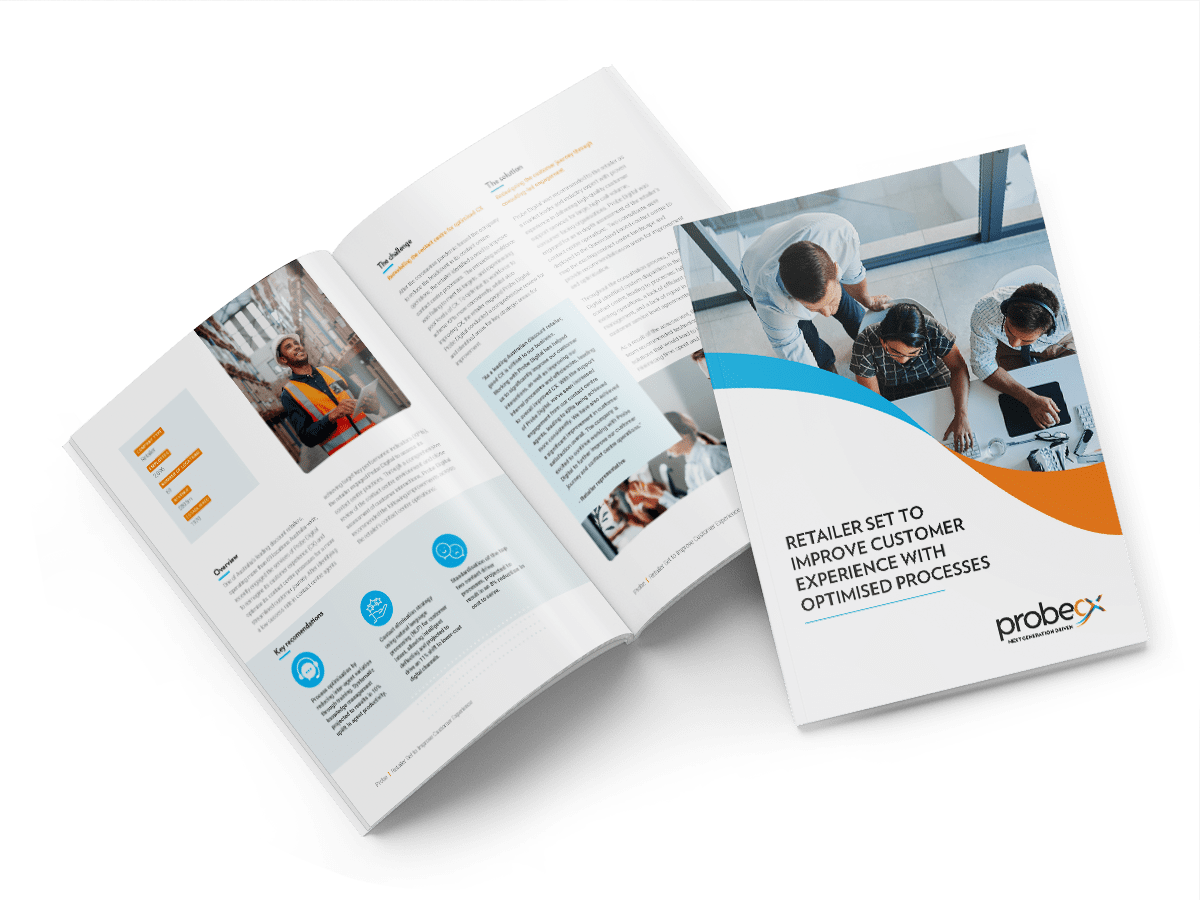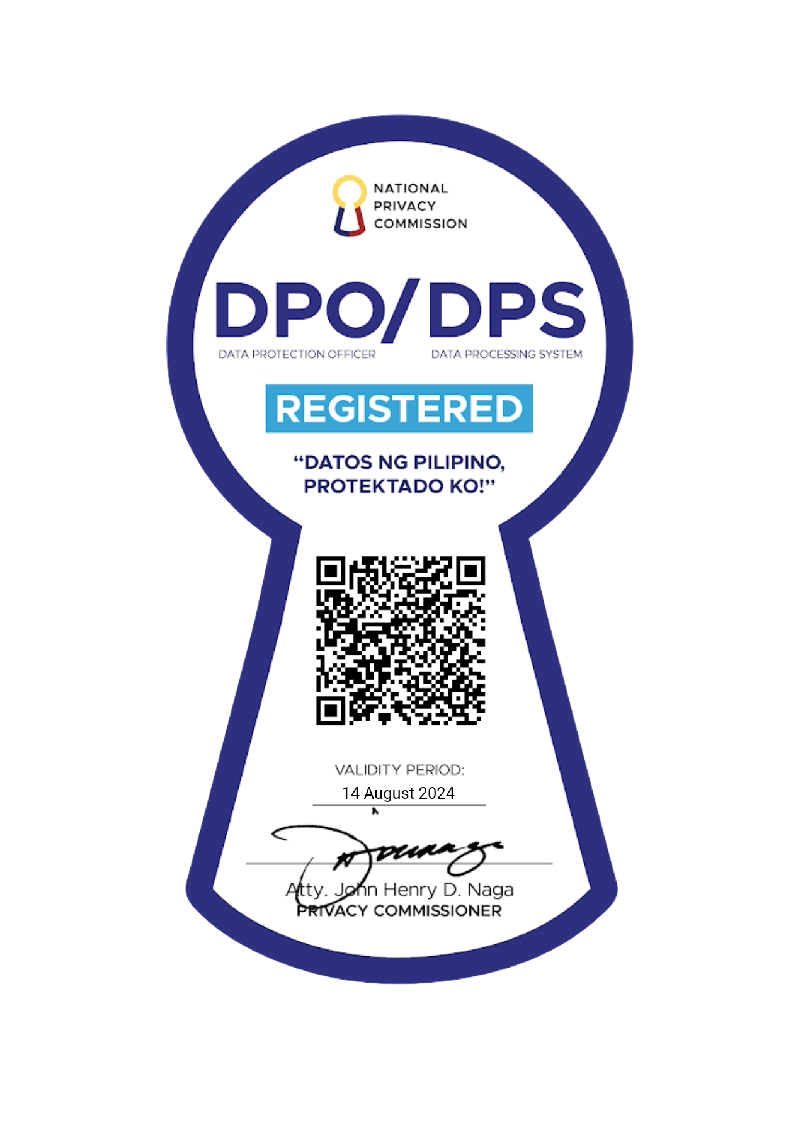-
About Us
Probe CX is a tech-powered, global customer experience organisation that amplifies human capabilities with technological excellence.
-
Vision and Culture
We help our clients become modern digital organisations by combining the latest technology with people, process and data.
-
Executive Team
Meet the team with unmatched experience committed to helping organisations create environments for digitally-enabled CX to thrive.
-
Compliance
Industry-recognised certifications to protect what matters most to our clients and their customers.
-
Locations
Over 19,000 team members delivering exceptional customer experiences across five countries.
-
Reasons to choose Probe CX
The top nine reasons to get more closely acquainted with Probe CX.
TECHNOLOGY & TRANSFORMATION SERVICES
 Creating exceptional customer experiences by 'doing it better'
Creating exceptional customer experiences by 'doing it better'
Optimise your customer experience by designing, deploying and managing digital solutions customised to your unique needs.
Continue reading- Blog
- What is hyperautomation?
What is hyperautomation?

In the words of Gartner research vice-president Fabrizio Biscotti: “Hyperautomation has shifted from an option to a condition of survival. Organisations will require more IT and business process automation as they are forced to accelerate digital transformation plans in a post-COVID-19, digital-first world.”
Gartner has subsequently revealed that 85% of its clients say they will increase or sustain hyperautomation investment strategies during the coming year. Given such uptake, it is no surprise the company is also predicting the worldwide market for technology that enables hyperautomation will reach almost $600 billion in 2022, a leap from $481 billion in just two years.
Of course, not every business has yet joined the revolution and for those late to the party, it all starts with one question – what is hyperautomation?
Hyperautomation definition
Hyperautomation is the extension of traditional automation opportunities beyond the confines of individual processes, bringing together several components of process automation and integrating advanced tools and technologies to amplify the ability to automate work. Starting with robotic process automation (RPA) at its core, it expands a business’s automation capability via the likes of AI, machine learning, process mining, and analytics.
While the adoption of RPA has been a revolution of its own in the past couple of decades, there has been a dawning realisation that it can be a challenge to scale at the enterprise level and is limited in the types of automation it can achieve. Indeed, a 2019 assessment by Gartner found only about 13% of enterprises were able to scale early RPA initiatives, making it abundantly clear that businesses need more when it came to their automation needs.
Hyperautomation has been a response to that challenge. It has introduced a studied approach to automation that involves identifying what work to automate, choosing the right automation tools and extending RPA capabilities by introducing various AI and machine learning tools. In a world where automating complex business processes can save companies untold dollars and increase efficiencies, hyperautomation is enabling real digital transformation.

Benefits of Hyperautomation
- More tasks: remember how excited you were when you realised RPA’s ability to complete repetitive and mundane tasks so much quicker and more efficiently. Well, hyperautomation can do even more as it assembles many components, tools and technologies to amplify the extent of automation you can apply to your processes, thus allowing you to kick even more goals.
- More intelligence: rather than only tackling repetitive, rule-based tasks, hyperautomation adds an extra layer of intelligence to RPA that allows the automation of processes that involve knowledge, strategy and logical thinking. Furthermore, it frees human workers to focus on more critical, innovative work.
-
More collaboration: the seamless connection between various teams, colleagues and departments is a key goal for any executive and hyperautomation ticks that box. The blend of RPA, intelligent tools and software robots can connect users across various arms of an organisation, from finance and HR teams to IT and customer service agents. Hyperautomation is not just a tool – it’s a transformation.
-
More productivity: nothing drains an employee’s morale and increase a manager’s frustration than seeing quality staff spending endless hours on repetitive, time-consuming tasks. Hyperautomation’s use of cutting-edge technology removes bottlenecks, finetunes processes and reduces manual tasks so a collective workforce not only delivers better productivity on more rewarding work but does so with more enthusiasm.
-
More insights: it is impossible for businesses to improve efficiencies and optimise processes if they do not where such inefficiencies lie. Enter advanced analytics, which delivers the data one needs to pinpoint areas of concern and show how automation may deliver a better return on investment. Hyperautomation is changing businesses for the better by providing them with data that not only allows them to understand trends but make predictions based on corrections and refinements.
-
Futureproofing: while RPA and traditional bots can execute simple steps to complete a task, hyperautomation takes things to a whole new level by creating machines that can study business processes, understand how they work and continually help improve them. Rather than seeing technology infrastructure grow stale and need to be replaced, organisations are future-ready and it is all because hyperautomation evolves and grows with a business.

Hyperautomation examples
-
Process mining and task mining tools identify and prioritise automation opportunities.
-
Automation development tools such as RPA, no-code/low-code development tools, iPaaS for integrations and workload automation tools reduce the effort and cost of building automation.
-
Business logic tools make it easier to adapt and reuse automation, with key examples including intelligent business process management, decision management and business rules management.
-
AI and machine learning tools are great for extending the capabilities of automation. Look no further than natural language processing (NLP), optical character recognition, machine vision, virtual agents and chatbots.

Summary
For anyone needing further proof why their business should join the list of ‘hyperautomation companies’, consider Gartner’s finding that the combination of hyperautomation technologies and redesigned processes will see organisations cut their operation costs by 30% by 2024. As Gartner’s Cathy Tornbohm said: “The shift towards hyperautomation will be a key factor enabling enterprises to achieve operational excellence and subsequently cost savings, in a digital-first world.”
Automation is changing the landscape of not only countless industries but the business functions that stretch across them all. This includes HR and recruitment executives, who are increasingly turning to RPA to lighten a load that has rarely been heavier given the impact of the COVID-19 pandemic on workforces. Learn the benefits of RPA in HR and insights into how the technology is delivering 10 times faster employee onboarding.
Related Articles
Artificial Intelligence
What are PDD and SDD In RPA?
Do you know what PDDs and SDDs are in RPA? Here’s the difference between the two, as well as how they develop an automated process.
Shared Services
Probe CX navigated the COVID-19 work-from-home debate.
Following the Contact Centre Week interview, Probe CX's CEO Andrew Hume discusses the work-from-home mobilisation of its global organisation and what it means for the future of work.
Technology
RPA in finance and accounting - a digital transformation
The finance and accounting sector is burdened by repetitive and time-consuming tasks, which is why robotic process automation is ideal...
© Copyright 2024 Probe CX | All Rights Reserved
Privacy Policy | Financial Hardship Policy | Whistleblower Policy | Complaints Procedure | Supplier Code of Conduct | Make a Payment | Client Login





